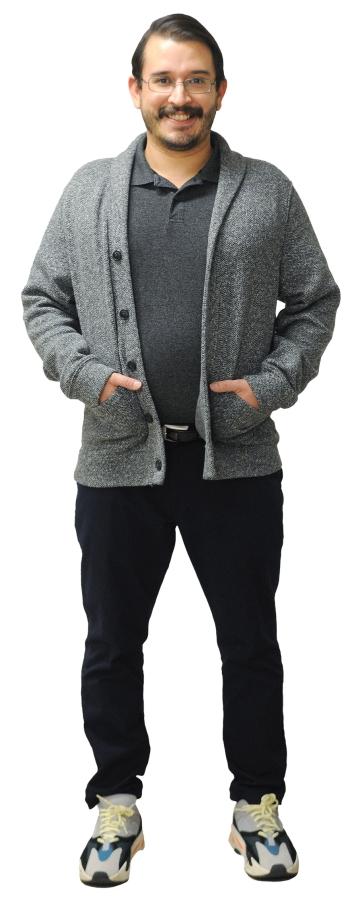
Michael Buitrago, an ELA teacher at Flushing HS in Queens, helps organize events and activities for students to promote school spirit.
What new challenges have you faced this year as coordinator of student affairs?
I see myself as being in charge of creating a community. I don’t ever want our school to be just a building where we do our thing and then leave. At the beginning of this school year, we realized right off the bat that our freshmen and sophomores didn’t understand that high school should be a place where you can stay after school to find “your people,” the people who like the same things that you like. They haven’t had that chance. Our seniors realize they’ve missed out on important opportunities to be together. So in many ways, this year is about reestablishing opportunities for students to find friends, hang out and be together.
How do you facilitate those opportunities for student interaction?
In the first month of the school year, I noticed right away that kids would come to school and the second the bell rang at the end of the day, they left. Before the pandemic, there had been an “after-school vibe” for sure. I realized we needed to ease everybody back into the idea that it’s OK to come together and stay after school. Clubs have been a way for kids to come together under the supervision of teachers in a healthy way. My leadership class and I polled students to see what clubs they were interested in — everything from piano to math to tabletop games, where the heart of the club is about getting students off their screens to play board games. Attendance has been amazing. The hallways are filled again after the bell rings, and that old vibe is coming back.
How do you work with students in your role as COSA?
Usually the COSA would work with the student government — but we had no elections last year. So I have a leadership class and a group of student leaders who understand that they’re the builders who will be passing the baton. That leadership class has become a marketing class in a lot of ways — we’ve had two school spirit weeks, and we had to figure out how to get the hype going and let everybody know. We went old school with fliers, and the kids brought up the issue of how we place them in the hallways. We’re a big high school, and they said, “It’s cool when I see a flier, but once I’m walking in a full hallway, I have to go with the flow. I can’t stop to look at it.” So now everything we do has a QR code — they walk by, their phone is in their hand, they can take a picture to scan it and read later. That was a big innovation for us.
How do you balance your COSA duties with your teaching position?
I teach two senior English classes and one leadership class. Then I have one period to devote to COSA responsibilities and another to being the senior adviser.
Why do you think it’s important to create that feeling of community in a school, especially this year?
I truly believe that a large part of the high school experience is being able to look at your school like a second home. Some of our students have class together every day, but they don’t know each other — they look at each other as just someone who sits across from them. I don’t think they realize that what’s fun and exciting and part of being a teenager is being together. When the students get those opportunities, they have so much fun — laughing, hanging out, making friends. It’s about getting them to invest in each other. I’ve been working on that with students and then I realized teachers need to be out there, too. We need to go to events and show our faces, because when the kids see us outside the classroom, they feel so special.
— As told to reporter Rachel Nobel